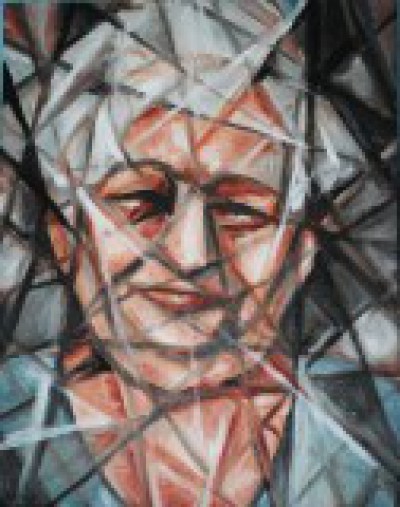By Tori Gottlieb, JTNews Correspondent
Late last month, University of Washington Hillel opened its doors to the artwork of Alice C. Gray, a local oil painter whose most recent works center around a the Jewish community living in Russia’s Far East.
Gray’s project was inspired by a trip she took in the summer of 2011 to Russia’s Far East, beyond Siberia. The trip, sponsored by the American Jewish Joint Distribution Committee (JDC) and organized on the Seattle end by Jconnect, sent fourteen young adults from the Pacific Northwest and the East Coast to the Khabarovsk and Birobidzhan to educate them about the struggles of the Jewish communities. The participants were briefed on the history and the conditions of the communities, met with recipients of JDC aid, did service projects, and spent many hours just hanging out with the young adults in Khabarovsk who were excited about their Jewish identity — in many cases, an identity they had only recently become aware of.
The JDC, founded in 1914, is the world’s leading Jewish humanitarian assistance organization. It provides assistance to Jews throughout the world, particularly in impoverished areas or areas in which the community is rebuilding — both of which apply to the former Soviet Union.
“People were sent [to the Russian Far East] as teenagers under Stalin, and a lot of them were forced to hide or bury their Jewish heritage in order to fit in,” said Gray, who added that the communities suffer from huge age gaps. Most of the residents are elderly or very young due to the emigration of many of the residents who would now be middle-aged. Many of those who remain suffer from abject poverty, and many receive aid from the JDC for food, medicine, and young children’s needs.
Gray started painting and drawing as a child, but didn’t begin oil painting until she was in her early 20s. For the last four years, she has been a student of Atelier, a French art instruction model that allows students to work on their own projects under the guidance of teachers. She has been working on this series of paintings since the group returned two-and-a-half years ago.
“I just felt like this was a slice of the world that people didn’t get to see,” said Gray. “It’s continuously changing. The elderly people aren’t going to be there forever, and the young people are going to grow up. It was something I really wanted to capture.”
Gray produced nearly a hundred paintings based on her travels to Russia’s Far East, but said the “shattered” series was her favorite to paint. Inspired by famed Jewish artist Marc Chagall, Gray was able to try a new style of painting while working to depict the idea of the Jewish community being broken and then reassembled.
“There was something uniquely inspiring about the Jewish community there,” Gray said. “I felt like if I didn’t record or paint it, then maybe no one would.”
Other members of the group echoed Gray’s sentiments, including Josh Furman, who works for University of Washington Hillel and attended the trip as a staff member when he was the director of Jconnect.
“Parts of the trip were really challenging, but it was important to see some of the difficult things facing Jews in that region,” Furman said. He explained that the trip embodied a strange dichotomy, particularly between the impoverished elderly persons — many were Holocaust survivors — and the energy of the younger populations who were excitedly reviving Jewish life in the region.
“The Hillel staff and leaders [in Russia] were doing such important and meaningful work, and you could see the passion that they brought every day,” Furman said. “I was lucky that we were able to work with them.”
Furman thinks Gray has done a phenomenal job capturing the communities they visited in her paintings.
“I’m not surprised that she created so many pieces, considering the diversity of what we saw,” said Furman. “I’m very impressed with her commitment to detail and accuracy.”
Joanne Rossignol also went on the trip with Gray and Furman, and has already bought several of Gray’s prints, including one of a cemetery gate where the group had volunteered to clean up neglected Jewish graves. Gray was initially concerned that no one would want a cemetery gate hanging on their wall, but Rossignol reassured her that she did: It meant that someone who otherwise might be forgotten would be remembered.
“It was one of those moments that makes me feel like I’ve succeeded in my artistic goals,” Gray said.
Rossignol added that the group members are so inspired by Gray’s work that they are trying to set up a showing with the JDC in New York.
“She definitely deserves the recognition,” Rossignol said, “but I also feel that it’s a great way to keep that [region] in everyone’s mind.”
Gray’s artwork is currently on display at University of Washington Hillel, and her exhibit, which is free and open to the public, has no formal end date. For more information on Alice C. Gray and to see samples of her paintings, visit her website at pbase.com/alycone/siberiapaint.
